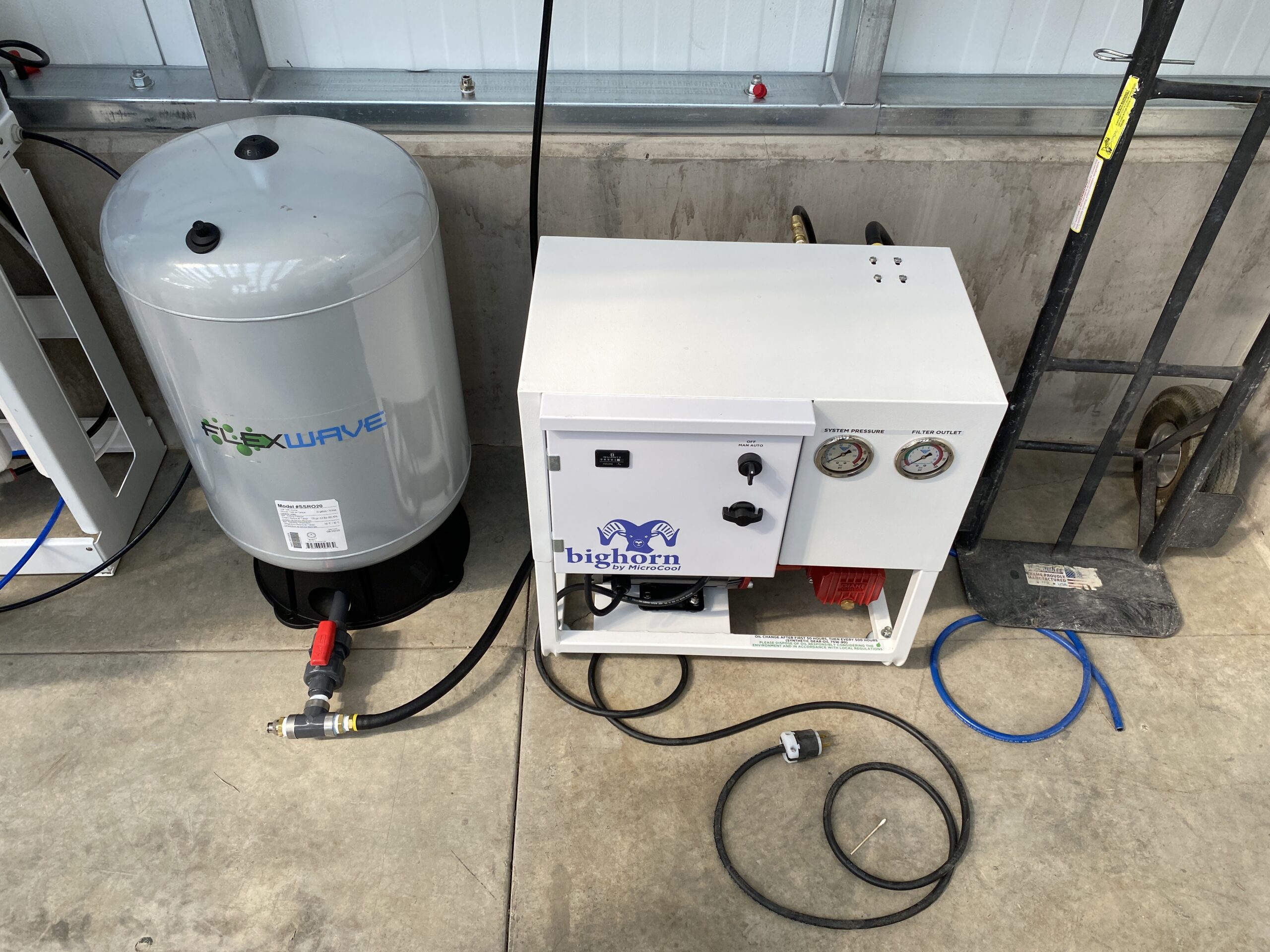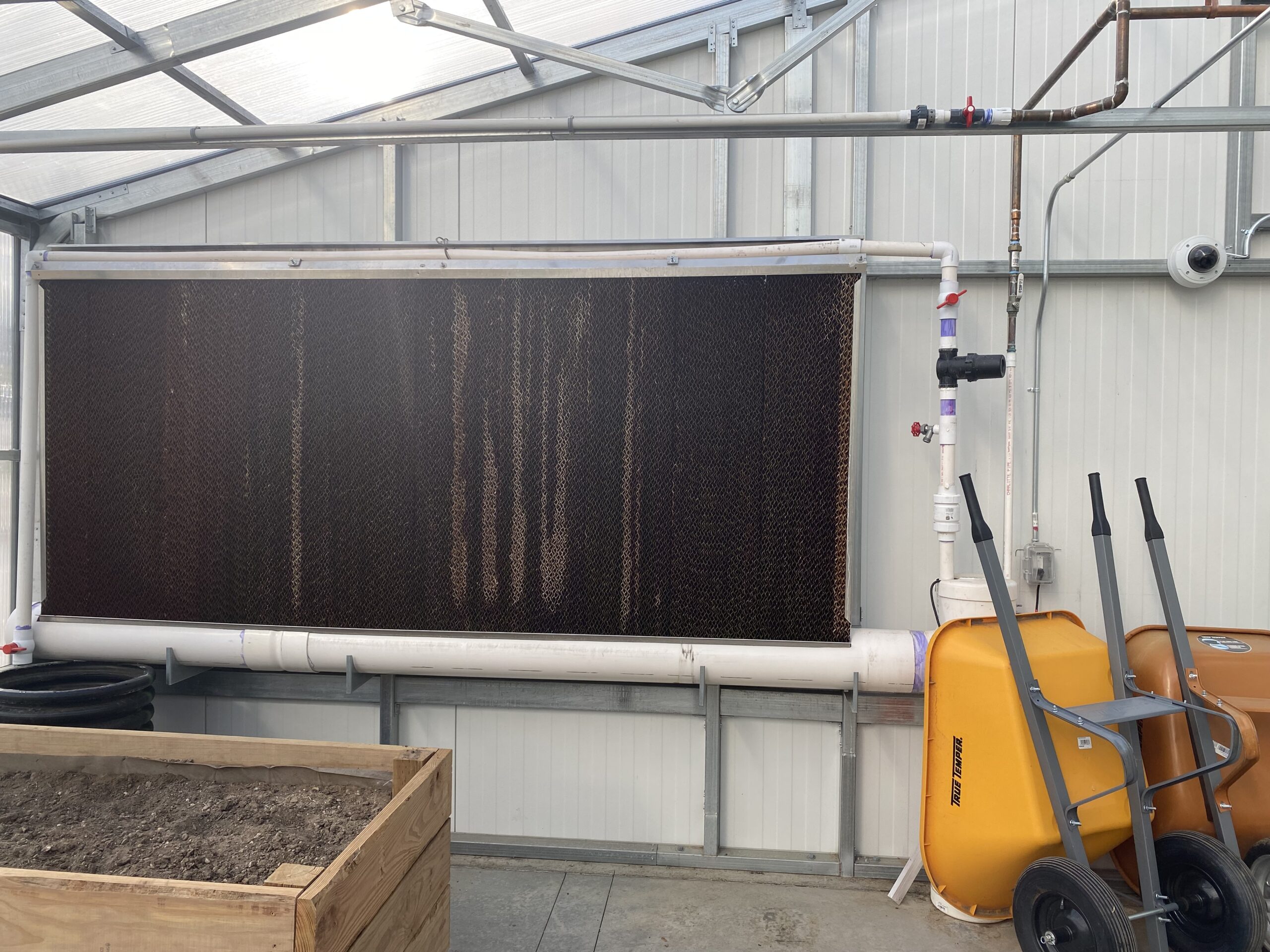Our goal at Ceres Greenhouse Solutions has always been to provide professional cultivators and hobby gardeners alike with greenhouse designs that are both efficient and effective. This includes designing and supplying environmental control systems that are right for your climate and growing goals. When it comes to environmental controls, a common question we get asked is, what’s the best way to cool a greenhouse during the summer? In this blog, we will cover everything from the basics of cooling to the different evaporative cooling systems that are available so that you can choose the best system for your greenhouse.
Basics of Cooling In Stages:
Cooling Stage 1 – Venting
Most of Ceres greenhouses use venting to cool in the summer. The idea is simple and has been used effectively by cultivators for a long time. Because a greenhouse is basically a solar furnace, we use exhaust fans to pull the warm heated air out of the greenhouse and bring in fresh, ambient air from outside of the greenhouse. During most of the year, this is an effective strategy. However, there are times in the summer when the outside air is too hot to effectively cool a greenhouse to desirable growing temperatures.
Cooling Stage 2 – Just Add Water
In the mid-summer months when ambient air temperatures are too hot outside to use for cooling, evaporating water into the air can be a cost-effective way to cool the greenhouse environment.
What is Evaporative Cooling?
Evaporative cooling describes the process by which the temperature is reduced as a result of the evaporation of a liquid. This occurs because evaporation requires energy, so heat is used as evaporation takes place. This process uses much less energy than refrigeration. Additionally, in dry climates, evaporative cooling has the added benefit of providing moisture to the air.
By adding water to the environment and allowing it to be absorbed by the ambient air, we have seen air temperatures drop by up to 30°F, depending on the existing conditions. Let’s compare the different types of evaporative coolers available for greenhouse growing.
Wet Wall Evaporative Cooler
Traditional greenhouse evaporative cooling is usually provided by a “wet wall” or “evaporative cooling wall.” This system consists of a small cistern that holds water with a water pump submerged within it. When cooling is needed, the water pump turns on, pumping water along the top of a cardboard-style honeycomb panel designed to absorb water as well as let air pass through. As air is pulled into the greenhouse by the exhaust fans, it passes through the wet wall before entering the growing environment, cooling the air significantly as it travels through the growing area.
 Wet wall technology is very simple and effective. A downside of this technology is that all cooling happens along one end wall, so temperatures (as well as relative humidity) at the wet wall and temperatures at the exhaust fans (sometimes up to 100 ft away) can vary significantly.
Wet wall technology is very simple and effective. A downside of this technology is that all cooling happens along one end wall, so temperatures (as well as relative humidity) at the wet wall and temperatures at the exhaust fans (sometimes up to 100 ft away) can vary significantly.
High-Pressure Fogging
High pressure fogging systems work under the same concept as a wet wall. These systems introduce water to the environment in the form of vapor – significantly reducing temperatures in a greenhouse. Fogging systems are usually maintained at high pressures (1000 – 1200 psi) using a VFD pump. When a greenhouse needs cooling, the controller opens a valve to send the high-pressure water into the greenhouse. The fogging system has nozzles that disperse the water from the ceiling over the plants as a very fine mist that is quickly absorbed by the air without creating “wetness” on the plants. We have found that high pressure fogging systems work better in higher humidity locations than evaporative cooling walls because more water can be absorbed into the air, allowing for more cooling capacity.
 There are two main benefits to a fogging system:
There are two main benefits to a fogging system:
- Precision – Temperature and relative humidity levels can be precisely maintained with a high pressure fogging system. Unlike a wet wall, the fogging system can pulse on for a few seconds or a few minutes as needed, based on the environment the cultivator is trying to create.
- Uniformity – The fogging nozzles are installed throughout the greenhouse, so when the system is on, the entire greenhouse is cooled throughout, meaning there is less variability and a more consistent temperature across the entire growing footprint.
Additional Benefit – Ability to Add Humidity
With the addition of smart controls, the high pressure fogging system can be integrated into the heat/cool system of the greenhouse to add another layer of environmental control. While it may seem counterintuitive, adding humidity to a greenhouse can often improve conditions for plant growth and reduce cooling costs. Through VPD (Vapor Pressure Deficit) based greenhouse controls, fogging can become a stage of the cooling process.
There is no “right” or “wrong” when it comes to evaporative cooling. In certain locations or with certain crops, a wet wall can be more than sufficient to maintain appropriate growing conditions through the hot summer months. In other locations or for high-value crops where more precision is needed, high pressure fogging can be a great way to control the environment inside your greenhouse.
 For more information on either system or to learn more about greenhouse growing in general, please reach out.
For more information on either system or to learn more about greenhouse growing in general, please reach out.

